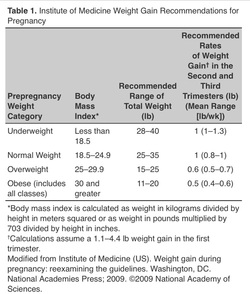
Where does pregnancy-related nutrition start? Good pregnancy planning begins with a prenatal vitamin about 3 months prior to conception. In addition to helping reduce pregnancy-induced nausea, your vitamin should contain 3 main ingredients: iron, for prevention of anemia; folic acid, for prevention of neural tube defects; and DHA, to promote fetal brain development. Also, there are a few foods to avoid: cured meats, deli lunch meat, uncooked seafood, excessive seafood, unwashed vegetables and a few others. Be sure to discuss with your provider if you have a question of whether a food is safe in pregnancy.
How can I even begin to think about food since I’m puking my guts out? If you suffer severe nausea early in pregnancy, then begin with smaller, more frequent meals, use of ginger ale, and avoiding trigger foods may be enough to help you manage your symptoms. Often, nausea is worse in the morning, and it may be that you feel totally fine by the afternoon. If your nausea still persists throughout the day and has begun to affect your ability to eat, then over-the-counter options such as Vitamin B6 and Unisom are safe in pregnancy with appropriate dosage (contact your OBGYN for instructions). However, if that still doesn’t work, you may need prescription medications. When you are really sick, you may not gain much or even any weight until the nausea resolves, which is generally by the end of the first trimester, and if that’s the case, it’s often OK. Just remember, even at 20 weeks of pregnancy, your baby only weighs about a pound, so he/she doesn’t require a large amount of calories to support.
So how much weight should I gain during pregnancy? Yes, I’m either really brave or really stupid to talk about weight with women (the jury is still out), but here is a table with the American Congress of Obstetricians and Gynecologists recommended guidelines for weight gain during pregnancy. So, if you disagree, that’s OK. It won’t hurt my feelings because I didn’t come up with them, and again, these are just guidelines. For each patient, depending on her medical history and personal desires, there may be slightly different weight-related goals.
Also, if you are curious as how to calculate your BMI, here is a link to an online calculator http://www.nhlbi.nih.gov/health/educational/lose_wt/BMI/bmicalc.htm
Who cares if I gain 100 lbs during pregnancy? Some of the biggest risks related to excessive weight gain during pregnancy include larger babies and development of gestational diabetes. Even though big babies are cute, they can be a little tougher for mom to deliver vaginally, and if mom also has gestational diabetes, more of that weight can be located in the shoulders, putting the baby at risk for shoulder dystocia and injury during labor. Those are also risk factors for cesarean section (ie, if the baby can’t fit), and uncontrolled gestational diabetes can increase the risk for birth defects and stillbirth. Not to mention that having pregnancy-related diabetes increases the chances of developing diabetes later in life.
Doesn’t all that weight just go away after delivery anyway? Well, some of it does. The average baby weighs just over 7 lbs, the average placenta weighs about 1.5 lbs, and the amniotic fluid weighs just about 2 lbs. So, your mommy makeover begins with about 10 lbs of weight loss before you even leave the hospital! To get all the way to your pre-pregnancy weight may require a combination of diet and exercise, though, but there is some good news for breastfeeding moms: moms who breastfeed burn an average of 300-500 calories more per day than those who don’t!
What a bummer right? Still, that doesn’t mean you can’t satisfy that craving for fried chicken dipped in ice cream gravy now and again. Just make sure that those indulgences are the exception, not the rule. By maintaining a balanced diet with lots of fruits and vegetables while allowing for occasional treats, this can be your healthiest pregnancy yet, and you’ll be back to your pre-pregnancy self in no time!
Nick
 RSS Feed
RSS Feed